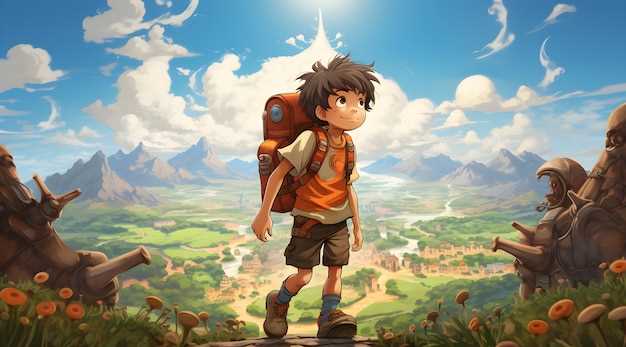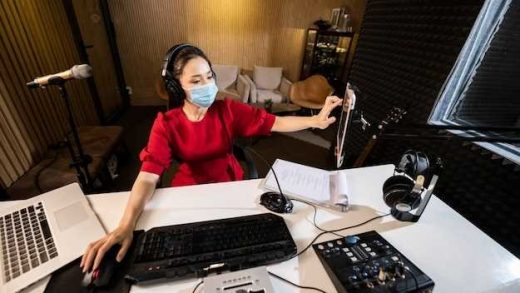
Throughout the ages, the art of bringing images to life has undergone a fascinating transformation, propelling animation from its humble beginnings to the dazzling heights of today’s cutting-edge computer-generated imagery. In this captivating journey, we explore the evolution of animation techniques, from the laborious and meticulous process of hand-drawn animation to the mind-boggling advancements made in CGI technology.
Long before the advent of computers and complex software programs, animators relied on the power of their hands and pens to craft each frame of a sequence. The sheer dedication and attention to detail required in traditional hand-drawn animation allowed for the birth of iconic characters and stories that have left an indelible mark on popular culture. With every stroke of the pencil, animators breathed life into their creations, eliciting emotions and immersing audiences in a world of wonder.
As time marched on, technology unfurled its wings and animation took flight into the digital realm. Enter computer-generated imagery, a realm where imagination knows no bounds. With the aid of sophisticated software, animators harness the power of algorithms and algorithms to create stunning visuals that push the boundaries of what is possible. The merger of art and science has given birth to a new era of animation, where each frame is meticulously crafted pixel by pixel, breathing life into a new generation of animated characters and stories.
From Pencil and Paper to Magical Motion
In this section, we will explore the remarkable journey of animation, tracing its transformation from traditional methods involving pencils and paper to the enchanting world of magical motion. We will uncover the awe-inspiring advancements that have shaped this art form, pushing boundaries and captivating audiences through the clever fusion of creativity and technology.
Revolutionizing the Art
The art of animation has experienced a revolution throughout its history, undergoing a series of remarkable changes that have propelled it into new realms of possibility. Utilizing the skillful use of pencil and paper, artists were able to bring characters and stories to life through captivating hand-drawn animation techniques.
However, this traditional approach eventually gave way to technological advancements, paving the way for computer-generated imagery (CGI) and its ability to create stunningly realistic visuals. This remarkable shift opened up endless possibilities, allowing animators to push the boundaries of their imagination and immerse viewers in a world of magical motion.
Fusion of Creativity and Technology
As animation evolved, the fusion of creativity and technology became a driving force behind its progress. The diverse tools and techniques available to animators today offer unparalleled opportunities for artistic expression and innovation.
During the transition from traditional hand-drawn animation to cutting-edge CGI, artists embraced the power of digital tools and software, enabling them to create intricately detailed characters, breathtaking landscapes, and lifelike movements. This marriage of creativity and technology has forever changed the landscape of animation, pushing the boundaries of what is visually achievable and captivating audiences in ways never before imagined.
The Rise of Stop Motion Animation and its Artistry
Exploring the emergence and significance of stop motion animation in the vast landscape of the evolving art forms, this section delves into the captivating world of this unique animation technique. A blend of traditional craftsmanship and innovation, stop motion animation has become a force to be reckoned with, captivating audiences with its meticulous attention to detail and artistic expression.
Resurgence in Popularity
Over the years, stop motion animation has experienced a remarkable resurgence in popularity, finding its place alongside other animation techniques. Its distinct visual style stands out amidst the digital landscape, resonating with both filmmakers and viewers alike. With the advent of advanced technology and accessibility to resources, stop motion animation has evolved and expanded its boundaries, paving the way for creative experimentation and pushing the boundaries of artistic expression.
Meticulous Craftsmanship and Artistic Expression
At its core, stop motion animation relies on the artistry and skill of animators who carefully manipulate physical objects, capturing each frame with precision and meticulous attention to detail. This hands-on approach breathes life into inanimate objects, creating a sense of magic and enchantment. With every movement and expression meticulously choreographed, stop motion animation becomes a form of art that elevates storytelling and transports audiences into imaginative worlds.
The unique tactile quality of stop motion animation adds a tangible depth to the characters and settings, enticing viewers to immerse themselves in the intricacies of the animation. Its physicality and imperfections bring a sense of authenticity and rawness, forging a connection between the audience and the animated world.
In conclusion, the rise of stop motion animation showcases the power of blending traditional craftsmanship and technological advancements. Pushing the boundaries of artistry, this captivating form of animation continues to captivate and inspire audiences, leaving a lasting impression through its meticulous craftsmanship and tangible storytelling.
Enter the Digital Age: The Emergence of 2D Computer Animation
In this era of technological advancements, a significant shift occurred in the world of animation, marking the dawn of a new age. Over the years, animation has undergone a remarkable transformation, transitioning from traditional hand-drawn techniques to the cutting-edge world of computer-generated imagery (CGI). Within this revolution, a pivotal moment emerged with the emergence of 2D computer animation, forever changing the landscape of the animation industry.
The Rise of Digital Tools
With the advent of computers and the development of advanced software, animators gained access to a plethora of digital tools that revolutionized the animation process. The introduction of powerful 2D animation software facilitated the creation of highly detailed and visually captivating animated sequences. These digital tools offered unprecedented speed, precision, and flexibility, enabling animators to experiment with new techniques and push the boundaries of artistic expression.
Enhanced Workflow and Efficiency
2D computer animation brought forth a multitude of benefits, including an enhanced workflow and increased efficiency. The digital nature of this medium allowed for seamless integration of various elements, such as backgrounds, characters, and special effects. Animators could easily modify and manipulate these elements, making it easier to refine and perfect the final product. Additionally, the ability to instantly preview animations and make real-time adjustments greatly accelerated the production process, saving valuable time and resources.
In conclusion, the emergence of 2D computer animation ushered in a new era in the world of animation. The availability of digital tools and their integration into the animation workflow revolutionized the way animated content was created. It opened doors to limitless possibilities and unleashed the creativity of animators, allowing them to craft visually stunning works that captivate audiences worldwide. With the continued advancements in technology, the art of animation continues to evolve, surprising and delighting audiences with each new innovation.
Pushing Boundaries: The Advances in Realistic CGI Animation
Exploring the forefront of computer-generated imagery, this section delves into the remarkable progress made in creating lifelike and visually stunning animations. By pushing the limits of technology, animators have revolutionized the way we perceive and experience animated worlds.
The Future of Animation: Exploring Virtual Reality and Beyond
In this section, we will delve into the exciting prospects and innovations that lie ahead for the world of animation. As technology continues to advance at an unprecedented rate, animation is set to undergo transformative changes, paving the way for new possibilities and immersive experiences.
Unleashing the Power of Virtual Reality
Virtual reality (VR) has emerged as a promising frontier in the field of animation, offering a whole new level of immersion and interactivity. With VR devices becoming more accessible and affordable, animators are beginning to explore the potential of creating fully immersive animated worlds. By combining the visual elements of animation with the sensory experience of VR, audiences can be transported into fantastical realms and engage with animated characters in unprecedented ways.
Moreover, VR opens up avenues for innovative storytelling techniques. Animators can now experiment with non-linear narratives, allowing viewers to navigate and shape their own storylines within the animated environment. This interactive storytelling unlocks a whole new dimension of engagement, making viewers active participants rather than passive observers.
Pushing the Boundaries with Augmented Reality
Augmented reality (AR) is another technology that is poised to revolutionize the future of animation. Unlike VR, which fully immerses users in a virtual world, AR overlays animated elements onto the real world, blurring the line between the physical and digital realms. This opens up endless possibilities for animators to blend animated characters and objects seamlessly into our everyday surroundings.
Imagine watching an animated character come to life on your kitchen countertop or witnessing an epic battle unfold on your living room floor. AR has the potential to transform our everyday environments into magical and interactive stages for animated stories. It allows for unprecedented levels of integration between the virtual and real worlds, creating captivating and unforgettable experiences for audiences of all ages.
In conclusion, the future of animation holds immense potential, with virtual reality and augmented reality at the forefront of innovation. As animators continue to embrace these technologies, we can expect to witness more immersive and interactive animated experiences that transport us to extraordinary new worlds.



